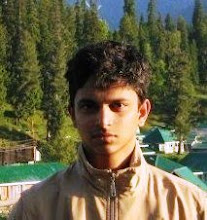What are the odds that a band from
far-away Meghalaya would spark nostalgia about Hendrix, Jimmy Page, and BB
King, all at the same time? Not much? Wrong,
if the band in question is Soulmate, the ‘pride of the north-east’, widely
regarded as one of the best blues-rock bands in this part of the world.
This article was first published in the Sunday Times of India, Goa, on September 20, 2009.
An important feature of Soulmate is that
it is one of the few Indian bands that consistently employ a largely original
set at their concerts. In Goa , it was a 70%
original list. And their stage-show here was no different. With a largely
interactive presentation, the audience were on their feet throughout. Off the
stage, Wallang and Kharbangar are affable and docile. On it, they transform
into hungry lions; with a powerful and provocative display of musical skill.
Songs like “Blues is my soulmate”, an original, set the crowd afire. Kharbangar
sang into a mikestand dotted with magnetic butterflies made of X-ray sheets. If
not butterflies, there are magnetic orchids sticking to the mikestand. She says
her uncle, an artist, makes them for her. “I’m a huge nature lover”, she
smiles.
And she supplements the aesthetics with a
huge and expressive voice that would make Christina Aguilera fans squirm. She
obviously enjoys her music, and shows it with a vivacious display of energy,
dance and emotion. Wallang is no less, creating his tone from only a miniscule
‘Bad monkey’ processor. Just before landing in Goa ,
he lost some of his guitar gear. Some of it was flicked, some left behind in a
taxi. How did he let us know about it? Through a song, of course. “If you ever
see a taxi driver playing the blues, think of me”, he said. Indeed, Soulmate is
a band that expresses its emotions through its music.
The
band was formed by Rudy Wallang and Tipriti Kharbangar in 2002. Seven years and
two studio albums later, it's been the same duo who form the soul of Soulmate,
adding session musicians whenever they're on the road. In Goa
on Friday night, drummer Shaun Nonghulo and bassist Ferdy Dhkar joined the duo.
Wallang and Kharbangar did not choose the blues. Instead, “the blues chose us”,
they say. Soulmate have performed at hundreds of gigs in India Memphis
And when Soulmate played in Chicalim on
Friday evening, this popularity was in ample display, evident from the fact
that the band garnered a full-house despite little or no publicity about the
gig. “It was totally unexpected, the crowd was fantastic”, said Wallang, who,
besides singing and playing the guitar, is responsible for most of the band's
lyrical content.
And
for Goa ’s blues fans, the concert provided
more than merely evening entertainment. It also inspired many. “I realized
today, that live, original music can work out in Goa ”,
said Krish Gidwani, a drummer. Elliotlouie Afonso, bassist in a thrash
metal band, left immediately after the concert and rushed home to practice bass
lines. “They’re a total inspiration", he said, adding "Soulmate
kicked some serious a** on Friday night”. He has one grouse, though. “Bands
like these hardly ever come to Goa ”. After
Friday night’s gig, that was the overwhelming feeling among the crowd.
“Soulmate should come here more often”. If and when they do, to their
burgeoning Goan fanbase, nothing else will matter.


